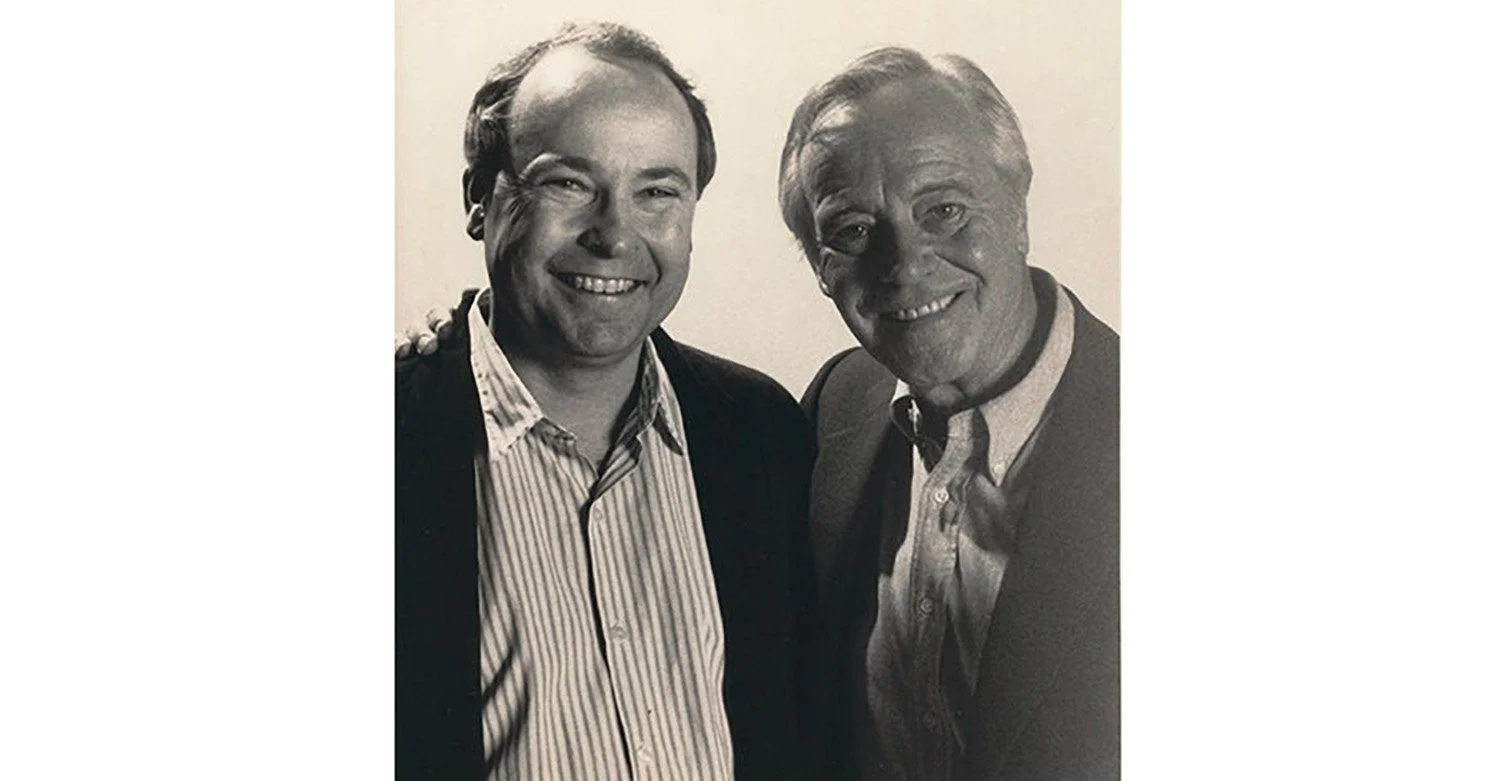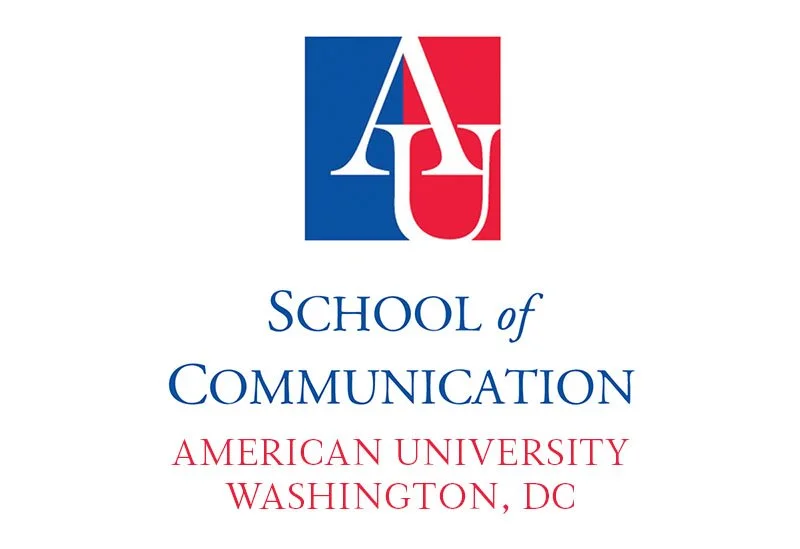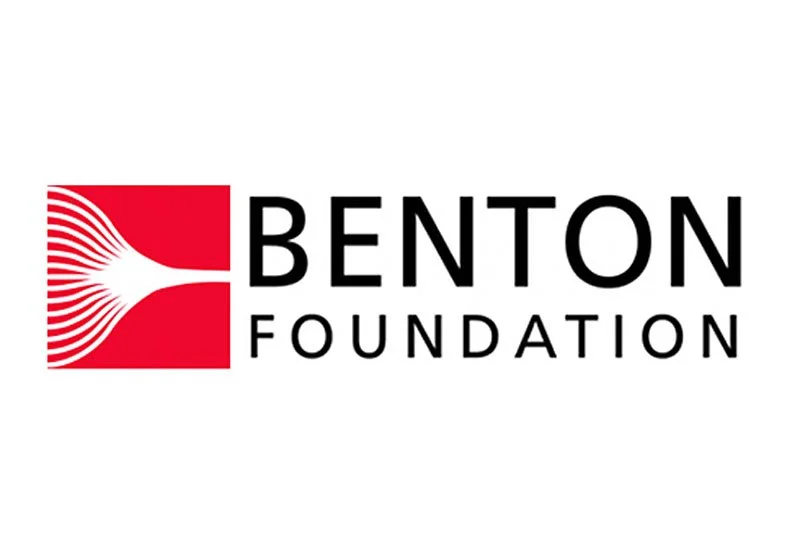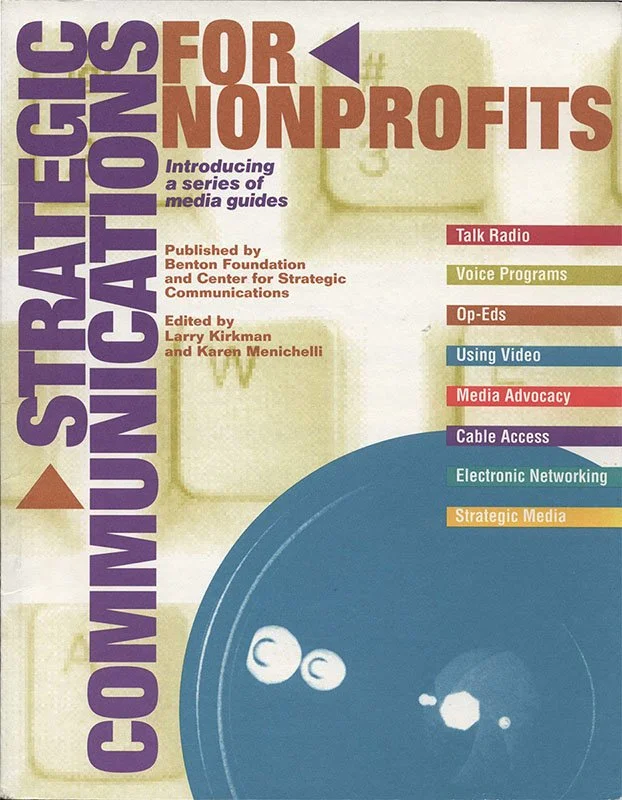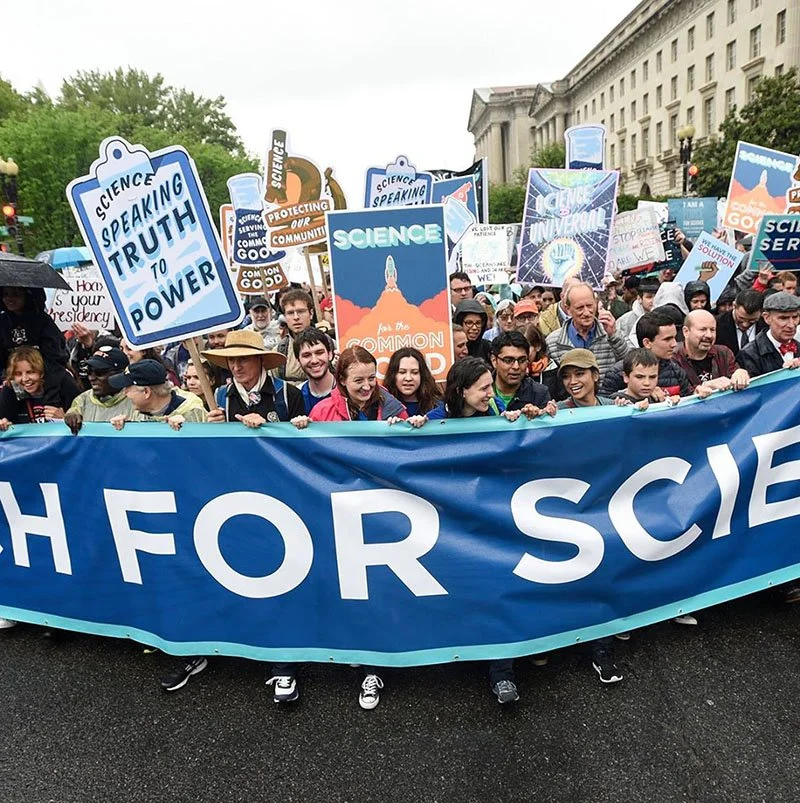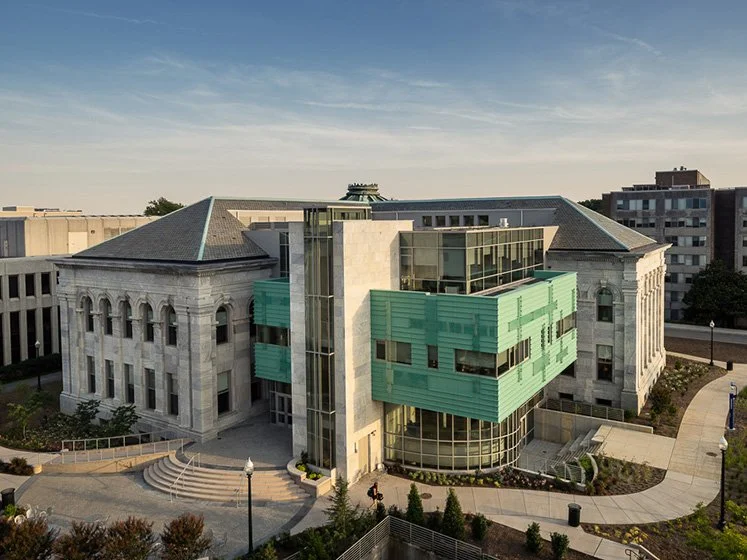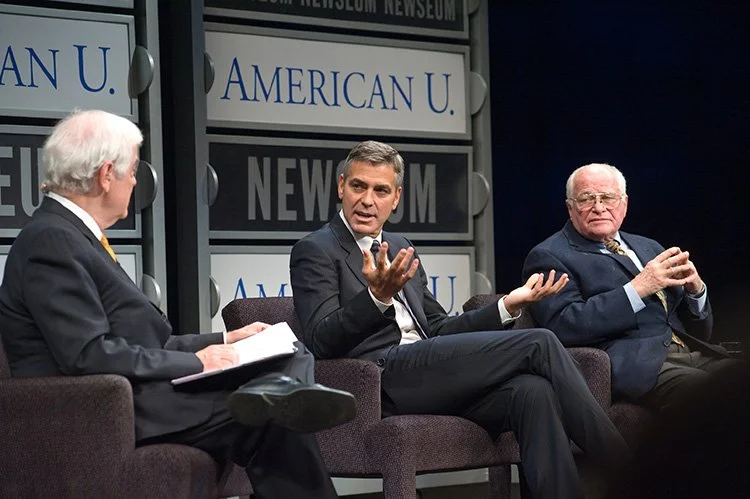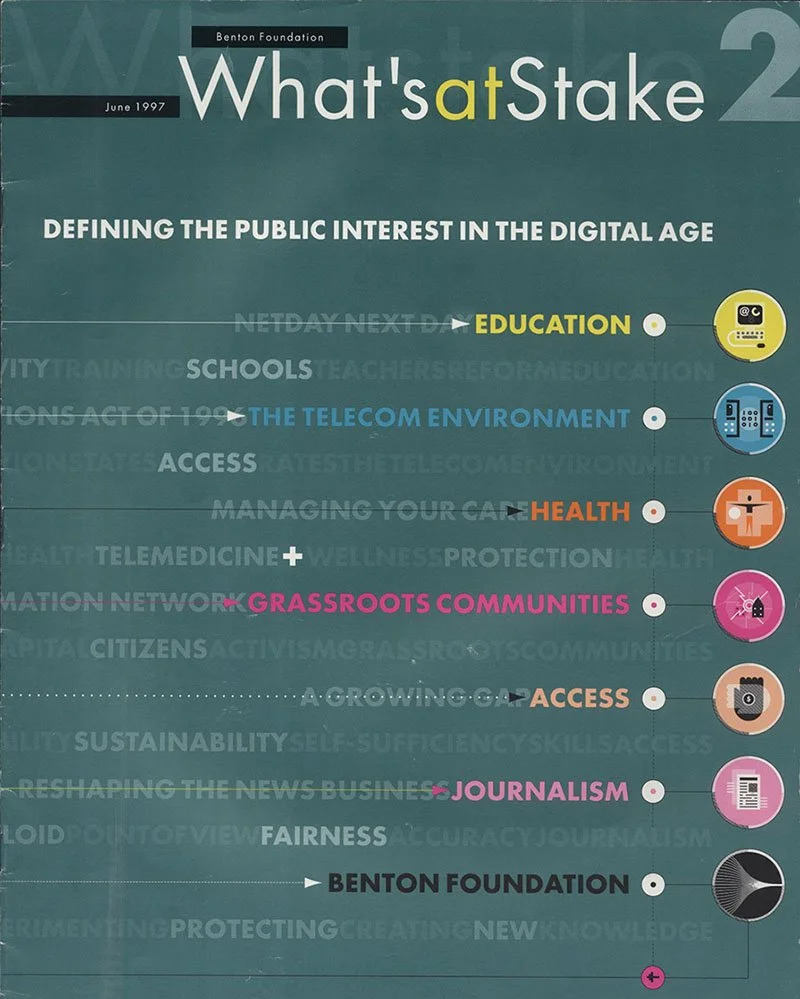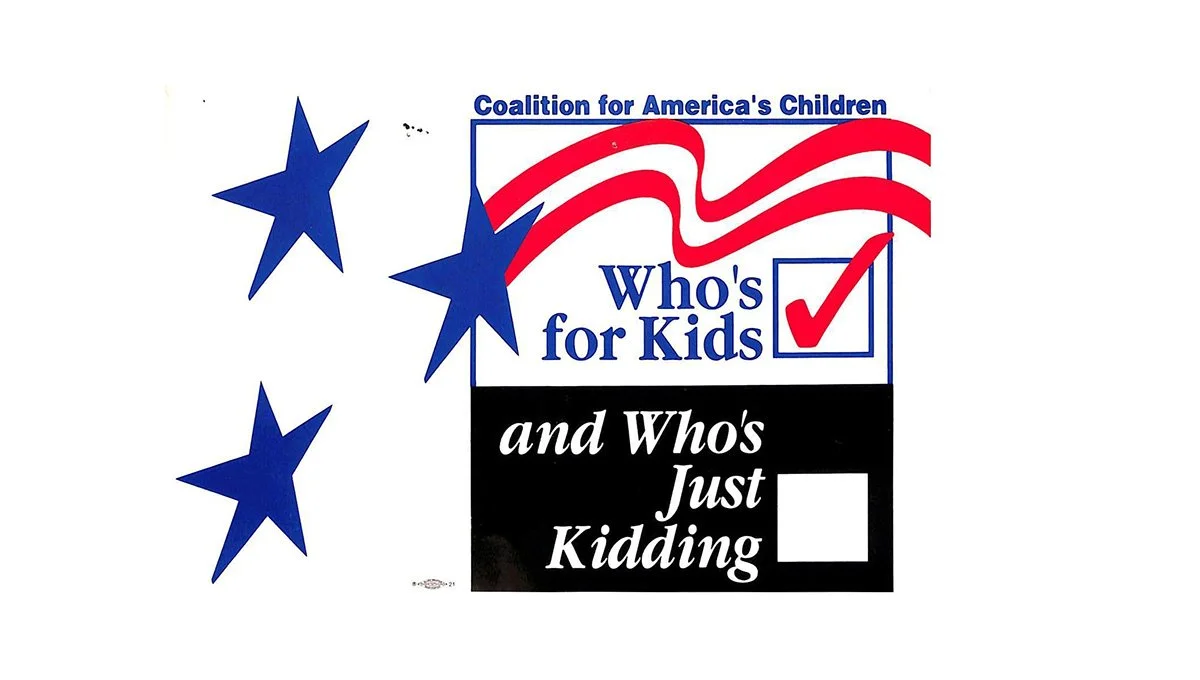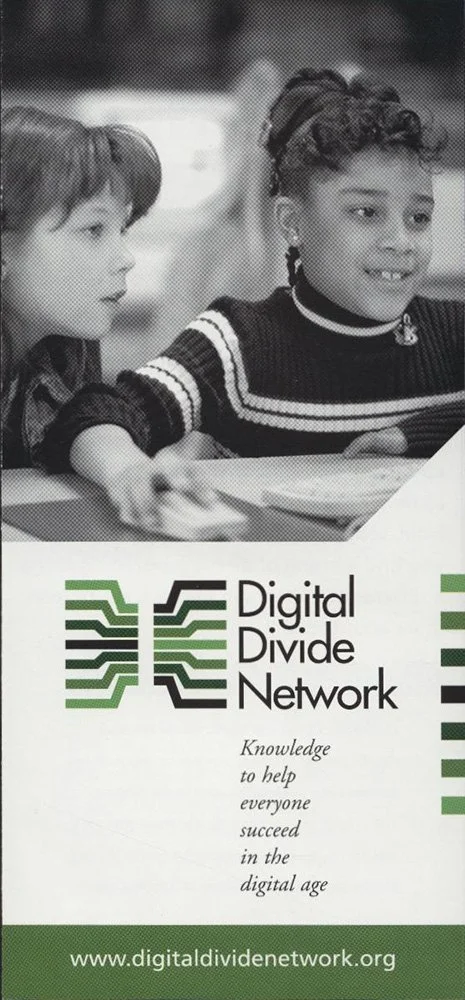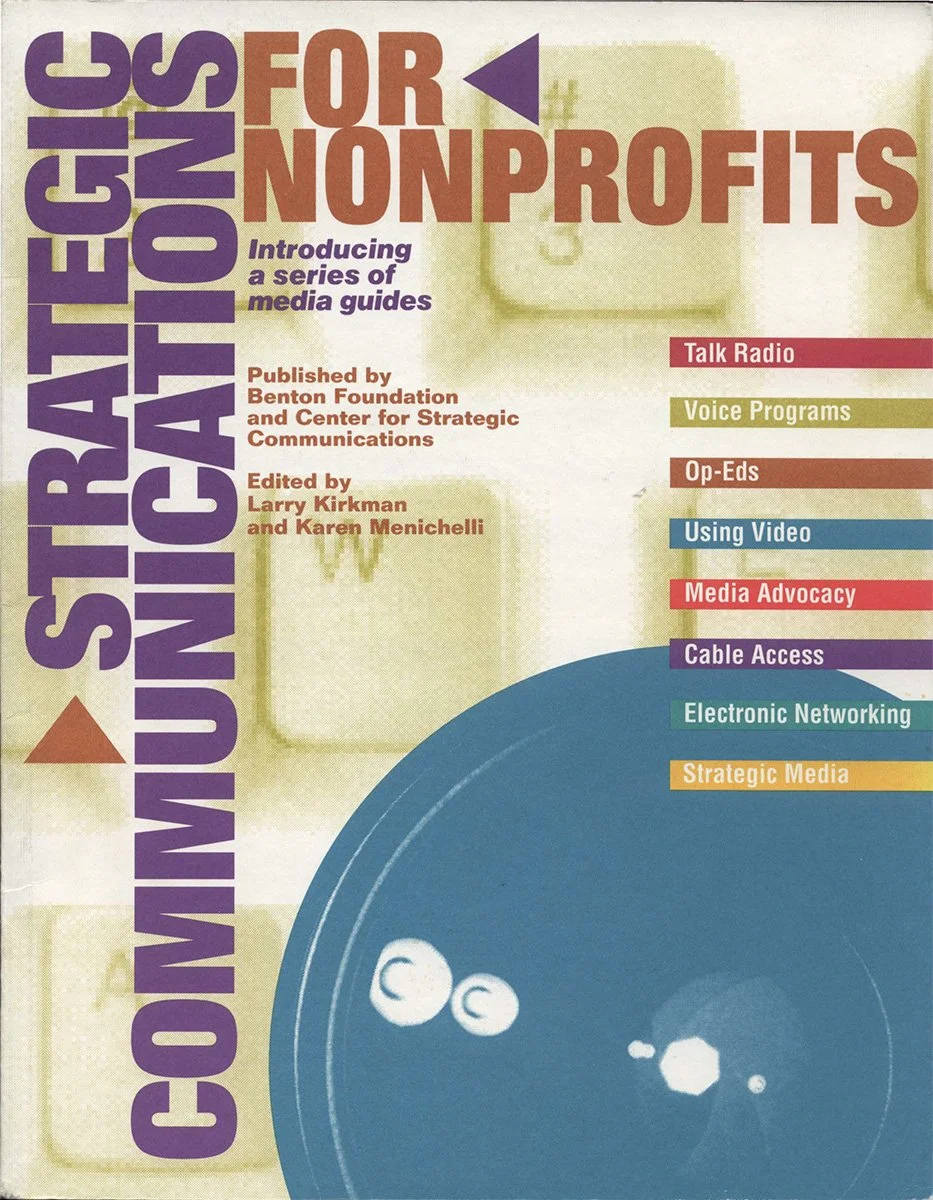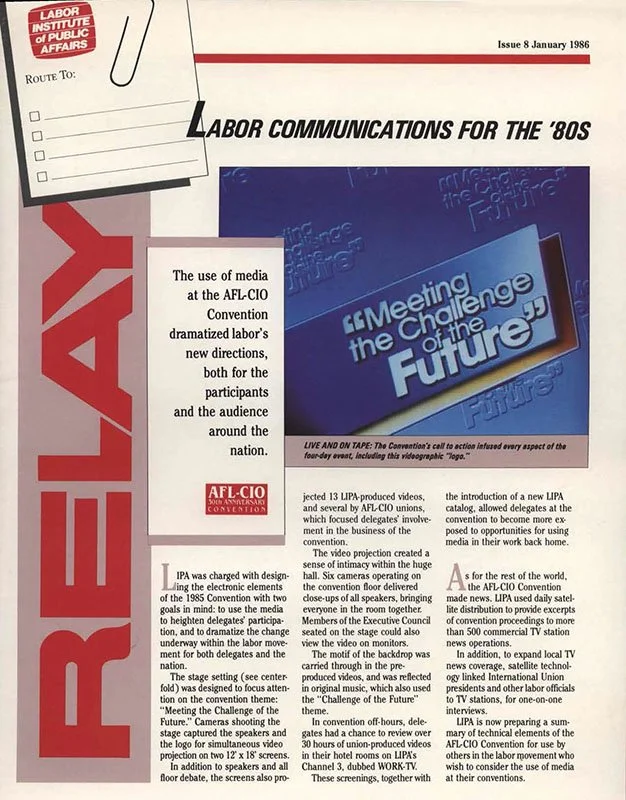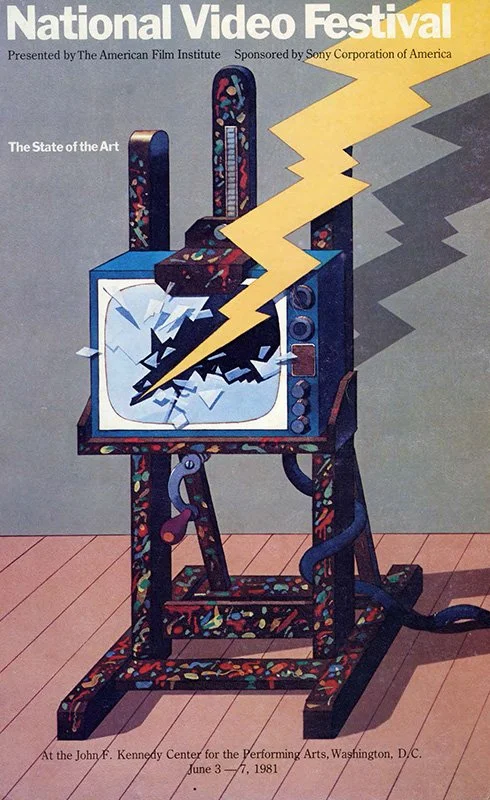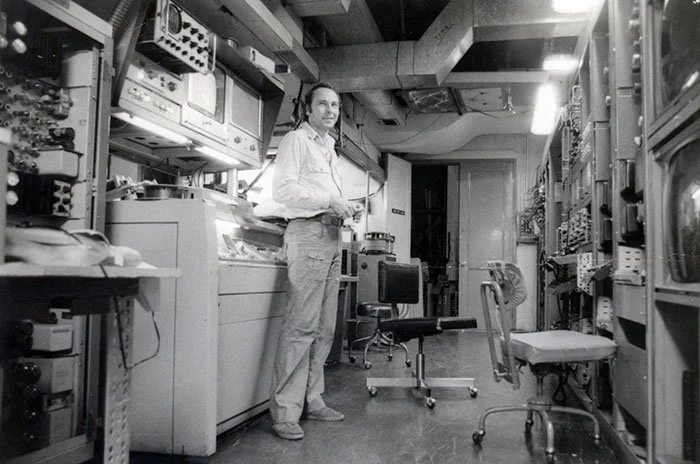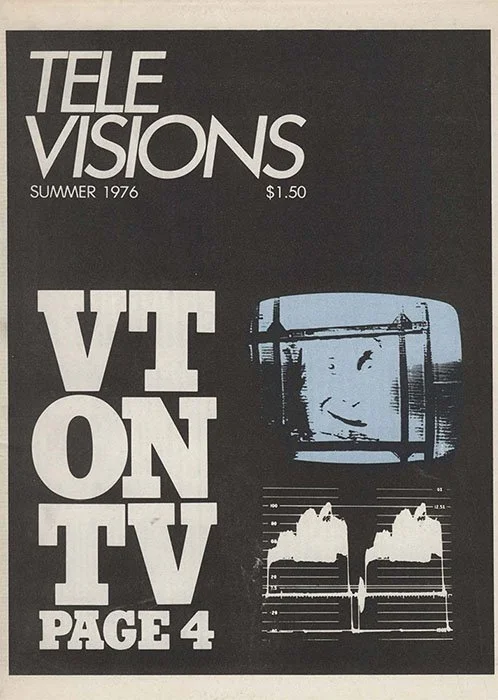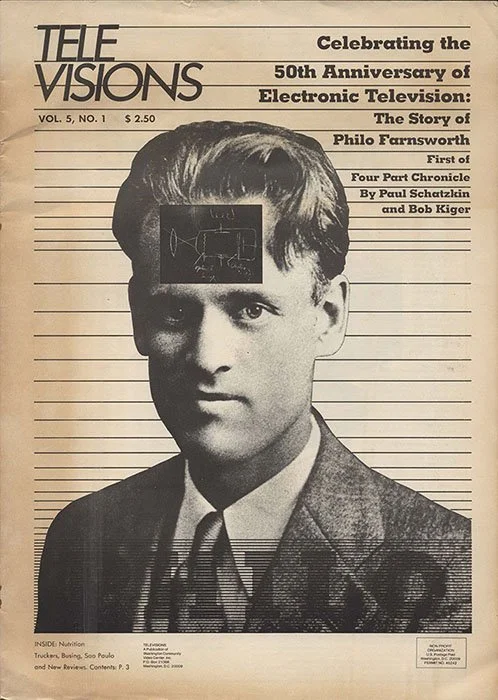ABOUT
IN BRIEF
My career in media for public knowledge and action includes video and television production, nonprofit strategic communications, social advertising campaigns, online journalism, and media policy reform.
I was dean of the School of Communication at American University from 2001 to 2012, directing programs in Journalism, Public Communication and Film and Media Arts.
I was executive director of the Benton Foundation from 1989 to 2001, serving as both a partner with major foundations and as a grantee, working to inform and demonstrate nonprofit communications in the public interest.
From 1982 to 1989, as first executive director of the Labor Institute of Public Affairs, I brought the AFL-CIO into the video age for organizing, political action, health, safety, community service, strikes and boycotts.
From 1980 to 1982, I served as the first director of TV and Video at the American Film Institute and produced its national video festivals.
In the 1970s, I was part of the movement of independent video documentary makers, as a producer, an editor of TeleVISIONS magazine and TV professor.
I was publisher of the Benton Foundation’s KidsCampaigns/Connect for Kids, a multimedia partnership with the Advertising Council that received more than $300 million in donated media – television, radio, print, online and outdoor. It was a pioneer in digital strategies for public service advertising fulfillment and a model for solutions-oriented journalism. Read my essay on Benton’s children’s campaigns.
As executive director of the Labor Institute of Public Affairs, I was responsible for Union Yes at the AFL-CIO, a $15 million national television, radio, print and billboard advertising campaign that featured both Hollywood stars and ordinary workers. It was a values campaign adapted by unions across the country to support organizing and community relations, strikes and boycotts.
I produced the American Film Institute’s National Video Festival in 1981 and 1982, sponsored by Sony, and Benton Foundation’s international Advocacy Video Conference in 1993. The National Video Festival at The Kennedy Center in Washington and AFI’s campus in Los Angeles brought the pioneers of the video revolution together, showcasing independent artists and public television producers, commercial networks and industrial applications.
The Advocacy Video Conference brought together 300 videomakers from 17 countries to map the field, with screenings at The Kennedy Center.
I published and co-edited Benton’s series of media guides, Strategic Communications for Nonprofits, which promoted a comprehensive approach to nonprofit communications, including media relations, video production and electronic networking. The package of nine guides was distributed by Ford, MacArthur, Carnegie, Robert Wood Johnson and other major foundations to their grantees.
In 2020, I directed, and Shannon Shikles edited, a 12-minute video, SCICOMM: Raising Our Voice for Science in Public Policy. The production came out of three years of reporting on the March for Science. I brought four AU student video crews to the 2017 and 2018 March for Science in Washington. We asked scientists to define the challenges of science communication in the “war on science.” How do we train and equip scientists to more effectively communicate the value and values of scientific knowledge?
As a filmmaker-in-residence in the Investigative Reporting Workshop (IRW), I partnered with Robin Mudge to produce an interactive documentary on the antibiotic crisis. Antibiotic-resistant infections will overtake cancer as the leading cause of death by 2050. The UN has warned that we are on the road back to the days of people dying from common infections and injuries. The World Bank estimates the global gross domestic product could fall by $100 trillion as a result.
I’ve resurrected a documentary I worked on 30 years ago, Expectations, about the loss of industrial jobs and decline of the middle-class, told through the stories of laid-off steelworkers in East L.A. Expectations was presented to the PBS network by WNET, directed by Michael Marton, narrated by John Lithgow, music with Ry Cooder and Mose Allison. David Weiner produced, Paul Aaron wrote, Neal Sacharow edited, and Leslie Parke was associate producer. I was executive producer. Watch a 5-minute preview.
As the first director of video and television for the American Film Institute, I produced the National Video Festival in 1981 and 1982. My essay AFI Enters the Video Age was used as a chapter in Becoming AFI. The Festivals asserted the scope, diversity and promise of video innovation. Broadcasting magazine headlined, “Video enthusiasts, artists and entrepreneurs assemble in Washington to show that the video revolution is not coming, but has arrived.” The L.A. Times wrote, “…the cumulative effect is that an art form is being born.”
IN DEPTH
Professor, Film and Media Arts, School of Communication, American University | 2012 - 2018
After 11 years as dean, I joined the faculty of Film and Media Arts and developed and taught graduate courses in social documentary and film history for filmmakers. I created the role of lead faculty for experiential learning and built on the programs in internships and employer relations I launched as dean.
I worked with the Center for Environmental Filmmaking to create a two year focus on water depletion, scarcity and pollution, adopted by more than 20 courses across the School of Communication, in film, journalism and strategic communication.
I joined the Investigative Reporting Workshop as a filmmaker in residence, where I produced Nightmare Bacteria: Life Without Antibiotics, an interactive documentary on the crisis of antibiotic resistance.
I organized a group of students, faculty and alumni to cover the March for Science in 2017 and 2018. We asked scientists to define the challenges of science communication in the “war on science.” How do we train and equip scientists to more effectively communicate the value and values of scientific knowledge?” Several of our videos were featured on March for Science social media and the video bank was the basis for my production: SCICOMM: Raising Our Voice for Science in Public Policy.
I created an International Cinema Series with the National Gallery of Art, American Film Institute’s Silver Theater and a group of embassies. A Bunuel retrospective with the embassies of Mexico, France and Spain, featuring my focus on his Mexican films, was a highlight.
I wrote two articles for Documentary on sessions at the International Documentary Association’s Getting Real conference and an article for Current on U.S. public television participants at IDFA, the International Documentary Festival Amsterdam.
With Mary Alice McMillan, Shannon Lawrence and Sunshine Yang. March for Science, 2018.
With Ashley Luke, Shannon Shikles and Nicc Gadsden. March for Science, 2018.
Dean, School of Communication, American University | 2001 - 2012
I became dean of the School of Communication (SOC) at American University in 2001. I understood the significance of the digital transformation and saw the opportunity for schools of communication to serve as laboratories for new professional roles and new media services.
I was inspired by the digital generation who were challenging the faculty to rethink and reinvent the curriculum when the traditional boundaries of our professional fields were breaking down. American’s teacher-scholar ideal, small classes, experiential learning and collegiality attracted me.
In 2001, the School of Communication needed to stake out a leadership role in communications education, professional practice, and the social impact of its programs. It lacked a public presence, had failed to engage alumni, had no academic centers with external funding, and no interdisciplinary MA programs.
My dedication to media for public knowledge and action was reflected in American’s strong social mission, its commitment to human rights and global perspectives. Schools of communication can anticipate and help shape a vigorous and inclusive public culture.
“I visited American University last month to try to answer a burning question for me: Why was the School of Communications there becoming such a hotbed for new forms of journalism? The answer kept coming back to a few factors: the dean Larry Kirkman was an alchemist, a producer who brought people in from across disciplines; the student body is interested in social justice and change; Washington, D.C., is a great place for academics to be part of the political action.”
Alumni and Development
Created a vision, program and architectural and engineering plans for a new home for the School of Communication in an historic building on campus, which opened in 2013. Provided leadership for the capital campaign to renovate the McKinley Building, and worked with faculty, alumni and students to realize a shared vision for the future of the School.
Worked with the University’s Office of Development to build the School’s first office of development and alumni relations, launched in 2002. Involved hundreds of alumni in the substantive life of the school for the first time, through a Dean’s Advisory Council of senior alumni, an alumni-student mentoring program and special events in L.A., New York and Washington.
Partnerships
Created prestigious partnerships with major media organizations for public programs and as outlets for faculty and student work, applied research and experiential learning, including the Newseum, USA Today and Gannett, NBC, Sony, PBS’ Frontline, Allbritton Communications, The Washington Post, The Associated Press, American Film Institute, Discovery Communications, BNA, Center for Public Integrity, New America Media, Online News Association and Investigative Reporters and Editors.
New Graduate Degrees
PhD in Communication
MA in International Media with the School of International Service
MA in Political Communication with the School of Public Affairs
Accreditations
In 2003 and 2008, the Journalism and Public Communication programs were reaccredited by the Accrediting Council on Education in Journalism and Mass Communications.
In 2006, the Film and Media Arts program was inducted into CILECT, the international association of film and television schools.
Film Series
Created Reel Journalism at the Newseum, hosted by Nick Clooney, and a Political Comedy Festival with the AFI Silver and International Cinema Series with the National Gallery of Art.
George Clooney, Nick Clooney and Bill Small at American University School of Communication and Newseum Reel Journalism Festival.
Center for Media and Social Impact, launched in 2001 as the Center for Social Media to produce programs on social documentary, intellectual property rights and the future of public service media.
Investigative Reporting Workshop, a laboratory for investigative reporting, IRW was launched in 2008; funders included the Ford, MacArthur, and Public Welfare foundations.
Center for Environmental Filmmaking, inspiring and training a new generation of environmental media makers. Partnerships with government agencies, nonprofits and public media since 2005.
Community Voice Project, launched in 2009, funded by Surdna, built on courses in community documentary and reporting, and partnerships with Washington area nonprofits and Smithsonian’s Anacostia Community Museum.
The ACEJMC 2008 accreditation site-visit team, with members from Syracuse, NYU, University of North Carolina and Poynter Institute, wrote, “American University’s School of Communication has enjoyed incredible success in the last six years. The School is led by a highly motivated and visionary Dean, guided by a forward-thinking mission statement, steered by a multi-faceted strategic plan and supported by a collegial group of productive faculty.”
They found: “outstanding leadership, clear sense of vision and a strong plan of action…a productive, committed, accessible faculty, consisting of both veteran, accomplished professionals and productive scholars… a balance between theoretical and conceptual and professional courses… an engaged, enthusiastic student body,” and, “a curriculum that takes full advantage of the School’s location.”
In reviewing my contribution, the site-team reported, “Faculty members, alumni, University administrators and professionals all had unanimous high praise for the Dean and generously credit him for the impressive record of outstanding achievements the School has racked up in the past six years…His vision, energy and focus have given the School a real momentum and put it on the national stage with major partnerships.… We heard him described as a ‘visionary’ again and again in interview after interview during our site visit.”
“His overall energy is admired for inspiring creativity and action among the faculty.…The Dean’s creativity is harnessed and focused, however, which is readily recognized as advancing the School’s agenda.…The Dean is also applauded for his collaborative skill in forging major partnerships…. On this front, the School is seen as the leader at the University….The School has made the most progress on strategic partnerships and external funding. ‘It is where the University should be heading,’ said the Provost. ’I credit Larry Kirkman’s leadership.’”
Chair, Board of Trustees, One World International Foundation | 2002 - 2006
I worked with the founders of One World, Anuradha Vittachi and Peter Armstrong, to provide policy direction and fundraising for this global multimedia collaborative of 13 One World centers. From Finland to Spain, India to Zambia, One World tapped into the knowledge and networks of more than 6,500 partner organizations working for human rights, sustainable development and social justice, including NGOs, development-oriented news services, foundations and research institutions. With core funding from the Ford Foundation, and project support from The MacArthur Foundation, Omidyar Network and Open Society Institute, OneWorld realized the network effect for civil society in the emerging digital landscape.
“We’ve done a little bottom-up media with OneWorld. I have a sense that the traditional media hasn’t been aggressive enough talking about important issues. The empowering nature of people reporting their own news, speaking out, and challenging governments and even traditional media sometimes is a very powerful thing.”
John D. and Catherine T. MacArthur Foundation Press Release 04/30/2004
“MacArthur Foundation Awards $250,000 to OneWorld International Foundation to Help Bring News From Remote Areas of the World to Global Audiences.”
The Chicago-based John D. and Catherine T. MacArthur Foundation has awarded $250,000 to the OneWorld International Foundation to help its online media network draw greater attention to human rights and sustainable development issues worldwide.
London-based OneWorld is an online gateway to news and commentary from a network of 6,500 nongovernmental organizations, radio broadcasters, and video producers who share their reporting through the OneWorld Web portal. With ten regional centers and feeds in twelve different languages, the network has become a resource for mainstream media outlets looking for information and news from fresh perspectives.
“With MacArthur Foundation support, the OneWorld daily headline service and the OneWorld Yahoo service will be able to tap into a large audience with a hunger for authentic and diverse global voices,” said Larry Kirkman, board chair of the OneWorld International Foundation and dean of the School of Communication at American University. “The events of 9/11 and the war in Iraq have triggered an upsurge of interest in international affairs, global interdependence, and multilateral problem solving. OneWorld is positioned to respond to this demand, with a focus on young people — those with the greatest stake in the future and those whose values are still taking shape…”
Executive Director, Benton Foundation | 1989 - 2001
Benton became a trusted guide in the emerging digital communications environment, an architect of a public interest vision for the information age, and a leading nonprofit Internet publisher. As a grantmaker and grantseeker, media producer, communications policy analyst and technology developer, we worked in three interdependent areas:
Defining and promoting public policies to support the public interest services and capacities of the new media — through research, publishing and convening;
Helping nonprofit organizations use communications, to be online information providers and social advocates, and to be partners with broadcasters — with tools, best practices, training, evaluation, networks, and resources; and,
Creating knowledge networks on the Internet, trusted sources of information, and links to action, as testbeds for new forms of journalism, social interaction, and education.
We raised more than $30 million for projects and programs from dozens of private foundations, corporations and government agencies.
Created a child advocacy program as a living laboratory and test-bed for the application of public interest communications strategies to children’s issues
Developed and produced a national campaign in 1991-2, The Campaign to End Childhood Hunger, with the Food Research and Action Center and dozens of major food banks across the country. Worked with children’s book author and illustrator Tomie DePaola to produce the logo and posters for the campaign and executive produced an award-winning campaign video.
A founding leader of the Coalition for America’s Children, along with representatives of the American Academy of Pediatrics, National Association of Children’s Hospitals and Child Welfare League of America. Served on the steering committee of the Coalition, representing 350 nonprofit groups and public agencies. Played a leading role in developing and implementing the Coalition’s Who’s for Kids and Who’s Just Kidding national campaign in 1993- 94. It was a comprehensive umbrella campaign, used by hundreds of organizations to get candidates for political office to articulate a children’s platform. Produced a television PSA, 85% of Americans (want candidates to do more for children), that was aired on television stations across the country leading up to the 1994 elections.
Publisher of KidsCampaigns/Connect for Kids
Developed and managed a partnership with The Advertising Council to produce a multi-media publishing venture to engage and equip Americans to act on behalf of children, first as KidsCampaigns, launched in 1996 in collaboration with the Coalition for America’s Children, and later as Connect for Kids.
Benton was the Ad Council sponsor for public service advertising campaigns that garnered more than $300 million in donated TV, radio, print, outdoor and Web-banner advertising from 1996 to 2001. In 1999, the advertising drove over one million unique user sessions a month to the Benton produced website, which had links to more than 1,200 children’s issues sites and 1,500 organizations nation-wide. This was a major step forward in public service campaign fulfillment.
KidsCampaigns/Connect for Kids inspired and empowered adults to pursue opportunities to make a difference for kids and their communities by providing information and resources to:
get the tools they need to make their communities work for kids;
get connected to groups that equip adults to act together for kids;
learn how well children are doing in their community, state or nation;
become a better citizen by representing children who can’t vote; and,
give time or money to improve the lives of children.
The AT&T Foundation provided a $3 million grant to launch the campaign, half of which was allocated to Benton for fulfillment through the web and an 800 number and half to the Ad Council for production and distribution of TV, radio, print, outdoor and online advertising. One wave of advertising included the first PSA to feature both a President and First Lady, the Clintons, which received more than $60 million in donated media. That year, 1997, the campaign was ranked #1 among Ad Council public service campaigns, commanding media donations in excess of $100 million.
Kellogg, Packard, Atlantic, Annie E. Casey and Knight foundations provided additional major funding for Benton’s web production and outreach.
Benton Conferences Informed and Shaped Public Media in the ’90s
Benton organized a series of ground-breaking conferences for the emerging digital age. During the Nineties, Benton built on these conferences to inform and propel its efforts to carve out a vigorous and inclusive public culture in digital media.
In 1993, the Advocacy Video Conference brought together 300 producers from 17 countries to share strategies and techniques in the use of video for social change. Keynote speakers included Kathleen Hall Jamieson, Erik Barnouw and Jim Hightower. Sponsors included the MacArthur, Ford and Kellogg foundations, National Video Resources, Freedom Forum and Sony Corporation.
Access and Equity in the Emerging Communications Environment was the first national meeting to raise the bar on the definition of universal service, with scholars, policy-makers and public interest advocates debating a set of commissioned papers.
The Public Interest Summit brought together 700 nonprofit leaders to claim a stake in shaping the new media environment. Produced in response to a request from the White House and the National Information Infrastructure Task Force, the event was broadcast live on CSPAN and National Public Radio and featured a keynote by Vice-President Gore. It was funded by a dozen foundations, including Ford, MacArthur, Carnegie, Kellogg and Packard.
Media Matters, a collaboration with the Heller School at Brandeis University, introduced a new repertoire of tools for public education and social campaigning to the communications directors of foundations and major nonprofit organizations, including media effects research, cognitive linguistic analysis, and deliberative polling.
Up for Grabs, in collaboration with the Department of Commerce’s National Telecommunications and Information Administration, brought together 250 practitioners of social applications of the Internet to share best practices and lessons learned.
DIGITDIVIDENETWORK.ORG
Launched in 2000, Benton’s Digital Divide Network provided the most comprehensive map of resources and strategies for bridging the digital divide. It was sponsored by corporate and private foundations, including AOL and AT&T, and the Gates, Kellogg and Markle foundations.
One World U.S Center
Created the U.S. Center for oneworld.net in 2000 with start-up support from The Rockefeller Foundation. With on-going core support from The Ford Foundation, and project support from The MacArthur Foundation, Omidyar Network and Open Society Institute:
Benton’s National Regranting Programs
Sound Partners for Community Health brought public radio and television stations and community groups together to produce public health programs, funded by The Robert Wood Johnson Foundation with $10 million over ten years.
Open Studio: The Arts Online provided training for hundreds of local arts groups on using the Internet, funded by the National Endowment for the Arts, Ford and Microsoft foundations.
Public Education and Advocacy Videos
Executive producer of two 3-minute “trigger videos” to galvanize the nonprofit voice to shape communications policy, Are You There, and This is Noise.
Executive producer of Destination Democracy: A Guide to Money in Politics, a web centered multimedia project using the issue of campaign finance reform to demonstrate the Internet’s unique strengths for mapping the full range of solutions to complex problems. In addition to an extensive web site and interactive solutions map, the package included two 50-minute videos under the title, “Money Like Water…” – one on “Values, Issues, Solutions,” and the second on “The Big Picture of Campaign Finance Reform.”
Produced and directed a one-hour pilot to launch the radio career of Jim Hightower.
Strategic Communications
Co-edited and published a ten volume series, Strategic Communications for Nonprofits, a comprehensive guide to media relations, media production, and networking. Many foundations provided funding for these guides and distributed the series to their grantees, including Ford, MacArthur, Carnegie and Robert Wood Johnson. The guide topics included, talk radio; Op-Eds; using video; media advocacy; cable access; electronic networking; strategic media relations; and making video.
In the spirit of the series, Benton, The MacArthur Foundation and P.O.V. published Making Television Matter (2001), a guide for producers, broadcasters, activists and funders.
The Communications Consortium Media Center updated and expanded its volume, Strategic Media, in 2008, using the original title for the series. My foreword to the new Strategic Communications for Nonprofits looks back on the mission and impact of the original guides and the need for the new edition.
The What’s Going On Series
Under my direction, the Benton Foundation mapped the policies, practices, and principles in key arenas where public interest services were being contested: schools, libraries, health care, low income communities and public broadcasting, with funding from The Kellogg and Joyce foundations.
The Learning Connection
Losing Ground Bit by Bit
Buildings, Books and Bytes
The E-Rate in America: A Tale of Four Cities
Executive Director, Labor Institute of Public Affairs (LIPA) | 1982 - 1989
As the founding executive director of LIPA, I brought the AFL-CIO into the information age, responsible for the first national advertising campaigns, public TV programs, electronic conventions, and national videoconferences.
I was responsible for the Union Yes national advertising campaign, with a launch budget of $15 million for television, radio, print and outdoor advertising, featuring Jack Lemmon, Tyne Daley and Edward Olmos, along with ordinary workers, to represent the values of the labor movement.
I was executive producer of America Works, (1984-‘85) a public television series of documentary/public affairs programs on workplace issues, hosted by veteran journalist Marie Torre.
Tom Shales said in The Washington Post, “America Works works – Torre is a tough, skilled moderator.” Episodes covered the topics of plant closings, services to the unemployed, pay equity for women, voter registration, toxics in the workplace, job retraining, and health care cost containment.
I was executive producer for the Campaign for America’s Future, the union movement’s first coordinated national television, radio and print advertising effort, with a budget of $1.25 million. It included 14 television spots in English and 4 in Spanish, 5 radio spots to set an issues agenda to the 1984 elections.
I was executive producer for Unemployment’s Up and I’m Down, a five-minute film, written and directed by Sherry Jones, with an original song by Ginny Redington, used for television advertising in 1982, with additional 1 minute and :30 second versions.
We built a video facility at the AFL-CIO and produced national video and teleconferencing projects on health care costs, safety and health standards, pension plans, and organizing strategies.
LIPA produced Democracy Yes, a collection of five-minute direct address statements from all 13 Republican and Democratic candidates for president in 1988, in response to a 5-minute video essay question presented by Ned Beatty. The video was distributed to 13,000 union halls for group viewing, and the transcript was published in national union magazines reaching 10 million homes.
LIPA produced guidebooks and held workshops and conferences on labor’s use of cable TV, media relations, videoconferencing, and advertising, and published Relay, a quarterly newsletter.
Our office in Los Angeles tapped into Hollywood talent, through the Screen Actors Guild and production unions.
LIPA developed and sponsored The Greatest Stories Never Told, a play featuring the authentic voices of union workers at the Mark Taper Forum in Los Angeles, that toured nationally in 1986.
I was executive producer of Labor Day specials for public television, including Singing for the Union, Future of Work, Union Women: A New Force for Change, and South Africa: Black Trade Unions Lead the Way.
I was executive producer of Expectations (1987), an award-winning public television documentary special on the loss of industrial jobs and a Steelworkers’ foodbank in East Los Angeles, narrated by John Lithgow, with music by Ry Cooder and Mose Allison, presented by WNET-TV.
Director, Television and Video, the American Film Institute | 1980 - 1982
I set up the TV and Video program for AFI, where I produced the first National Video Festival at The Kennedy Center, developed The Sony Video Center, a state-of-the-art production facility to serve the Center for Advanced Film Studies, and organized screenings and conferences at AFI’s Kennedy Center theater and new Los Angeles campus.
AFI National Video Festivals, 1981-1982
At the American Film Institute, I created and produced the National Video Festival, sponsored by Sony Corporation, and launched in 1981 at the Kennedy Center, and in 1982, held in Washington and in Los Angeles at the new AFI campus.
The first festival reviewed ten years of innovations in documentary and community video and brought together catalyst users from every sector of television and the emerging cable industries. The second festival featured new work in the arts, performance and narrative to challenge the traditional formulas of film and television.
Independent Video Production for Public TV | 1975 - 1979
In the 1970s and ’80s, I was part of a movement of independent producers for public television, whose productions pushed the envelope of developments in video technology and public affairs formats. I produced, directed and wrote documentary and public affairs specials.
Director, editor and producer, with Victoria Costello, The TV Family (1976), funded by The National Endowment for the Arts, profiling the TV viewing habits and opinions of a three generation family, showing the ambivalence behind the ratings, using new portable color video recording.
Senior producer for Nuclear Power: The Public Reaction (1979), a three-hour live documentary event special from the Three Mile Island march on the Capitol. It was the first use of the the PBS satellite system by a group of independent producers. The live program was hosted by PBS science reporter, David Prowitt, and featured documentary roll-ins shot on the buses coming to the demonstration and in the crowd on the Mall, and edited on the spot, an innovation at the time. We called it a “live documentary.”
Tom Shales, TV critic for The Washington Post, called Nuclear Power: The Public Reaction groundbreaking:
“May 6, 1979, was the first day of the ’80s. We moved into a New Television — though on tip-toe. Not everyone noticed it when it happened or knows about it even yet, but the day was a landmark for public TV, for the technological revolution in broadcasting and for America’s rapidly expanding subculture of grass-roots video guerrillas.”
Line Producer and Segment Producer for a ninety-minute special, Abortion: Right to Life vs. Right to Choose (1979), from the Right to Life Convention in Cincinnati, Ohio, hosted by Daniel Schorr and Marie Torre. I also produced a documentary report for the special, with Daniel Schorr, on the battle for Congress and the Republican “hit list.” This program was funded by the Corporation for Public Broadcasting’s Special Event Fund.
Producer and Post-Production Supervisor, None of the Above (1980), with funding from PBS and the National Endowment for the Arts, an election day special on non-voters, mixing together stories of non-voters, interviews with journalists and political scientists and a news report on voting trends. With final recording and editing of mini-documentaries on election eve and airing on PBS on election day, this show was on the cutting edge of video production.
Director and Producer, On the Line (1981), documentary portraits of new union members, including football players, nurses, and bank tellers. The show was hosted by actor Robert Prosky and funded by a group of national unions, including the Machinists, AFSCME, UFCW, Football Players, Operating Engineers and Seafarers.
Professor, School of Communication, American University | 1976 - 1980
I brought video into the AU film program. Taught courses in television studio production and introduced location video and documentary production courses. Worked with professors in Performing Arts and Audio Technology to create interdisciplinary courses and produce special projects.
TV Acting
While a professor at American University from 1976 to 1980, I co-authored TV Acting (1979), a text on screen performance published by Hastings House, with Elizabeth Monk Daley and James Hindman.
Editor and Writer TeleVISIONS magazine | 1975 - 1979
I was an editor and writer for TeleVISIONS, a quarterly journal on the new media of video and cable TV, funded by The National Endowment for the Arts, The Rockefeller Foundation, and The Eugene and Agnes Meyer Foundation.
TeleVISIONS was inspired by the potential of the new media of video, cable and satellites. Founded by Nick DeMartino at the Washington Community Video Center, the quarterly was filled with high expectations for video’s impact on education, democracy, work and health. We imagined a dynamic and participatory communications environment, a vision that has become commonplace in the digital age. The watchword was access. We wanted to create new media services and reinvent professional roles.
Community Video and Cable TV Activist | 1971-1976
Co-founder, Los Angeles Public Access Project, early center for government, education and public access channels. Helped organize one of the first national public access conferences, held at NCTA.
Collective member, Washington Community Video Center, taught workshops and active in a network of media arts centers and community video centers. DC center funded by The Rockefeller Foundation and The National Endowment for the Arts.
Los Angeles Newsreel | 1969-1970
Founding member of filmmaking and film distribution collective. Created and presented educational programs for schools, advocacy organizations and unions.
Co-chair of the Education Committee for the Entertainment Industry for Peace and Justice (EIPJ).
Public School Teacher | 1968-1971
Taught in several settings and educational levels:
Developed and managed four media centers for illiterate teens in Prince Georges County, included the use of first video portapaks and photography, 1970-71.
Team taught social studies, literature, and history for 12th grade students at Eastern High School in DC.
Taught kindergarten in Arlington, Massachusetts as part of an experiment to introduce men into elementary schools.
Highlights of Service for Public Media
Selected Service to the Field
The Advertising Council, member, Public Issues Advisory Committee, 2002 — 2011
Communications Consortium Media Center, member, Board of Directors, 2008-2012
Knight-Batten Awards for Innovations in Journalism, judge 2009, J-Lab: Institute for Interactive Journalism
White House Correspondents Association, judge, Aldo Beckman Award, 2003 and Edgar A. Poe Award, 2009
American Film Institute and Discovery Channel SILVERDOCS, jury, 2003
Grantmakers in Film and Electronic Media, member, Steering Committee, 1997-2001 and chair of its Film and Video Festival,1998
Funders for Citizen Participation, chair, Communications Committee, 1998-2001
Council on Foundations, chair, Communications Committee, 1996
Utah/US Film Festival (later Sundance), judge, Park City, Utah, 1982
Washington, DC Regional Chapter of the National Academy of Television Arts and Sciences, member board of directors, 1978-1980
Education
BA, Comparative Literature, Columbia College
Columbia University in the City of New York, 1967
MAT, Harvard Graduate School of Education
Harvard University, 1969







